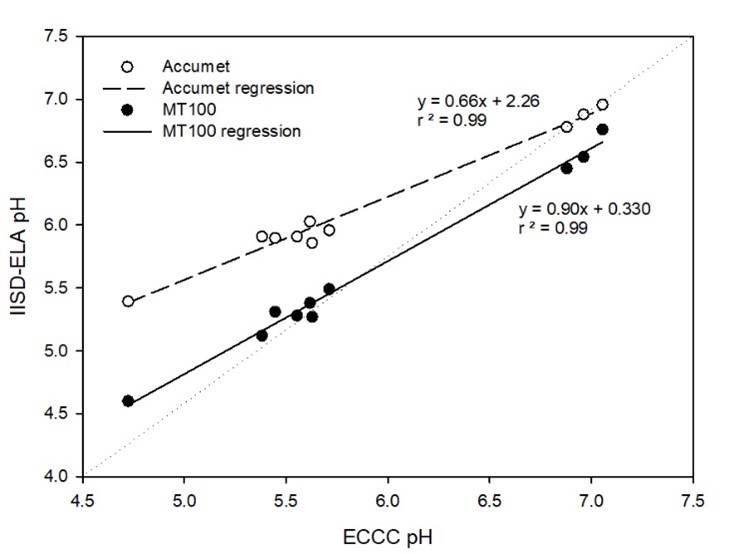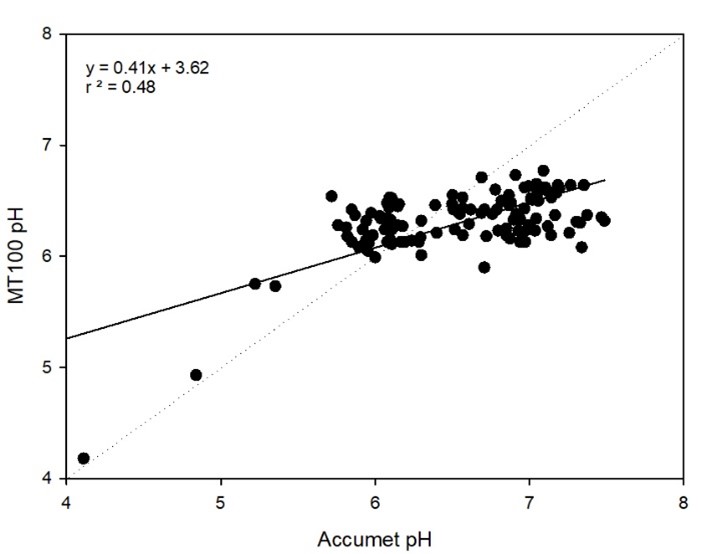News April 12, 2022
This is How We Can Automate Some of Our Analyses—thanks to our donors!
By Sonya Havens, Research Chemist
What do you do when you want to incorporate new instruments and need to maintain the integrity of a dataset of over 50 years?
Here at IISD Experimental Lakes Area our data from our Long-Term Ecological Research program is used to understand the long-term variability of various constituents (e.g., nutrients, phytoplankton, zooplankton, fish, etc.) in small boreal lakes. Indeed, this data has been utilized to study how climate change has affected small boreal lakes (e.g., air is getting warmer, lakes are getting less icy, lakes are getting darker, fish are squeezing into smaller habitats, and fish are getting smaller). To ensure that the variability witnessed in our data is due to natural ecological variability or responses to perturbations (e.g., climate change), we need to minimize any variability that may be due to instrument or method changes. While this can lead to a reluctance to update instruments or methods, this reluctance is often overcome by various factors (e.g., instrument is obsolete or requires constant maintenance, automation is needed, more efficient or non-lethal methods are discovered, etc.).
When we asked for help to build up our labs we had two distinct motivations for instrument upgrades:
1. we needed to automate our total dissolved phosphorus (TDP) analysis to increase sample throughput capacity, and
2. we needed to procure an instrument to conduct gran alkalinity analysis so that the samples no longer had to be sent off to an external lab for analysis.
Thanks to many incredibly generous donors, including Red River Co-op and MANTECH, we were able to procure these instruments in 2021; a phosphorus channel on our Seal Auto Analyzer 3 (AA3) to automate TDP analysis and the MANTECH MT-100 to conduct automated analysis of gran alkalinity as well as pH, conductivity, and turbidity. To determine if these instrument adjustments will induce non-ecological variability in the long-term dataset, we need to compare results from the old and new instruments/methods.
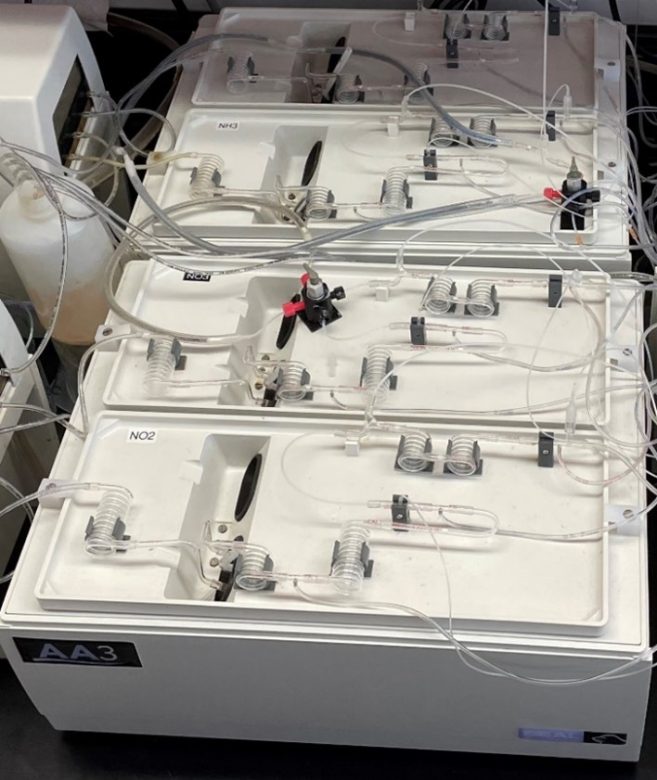
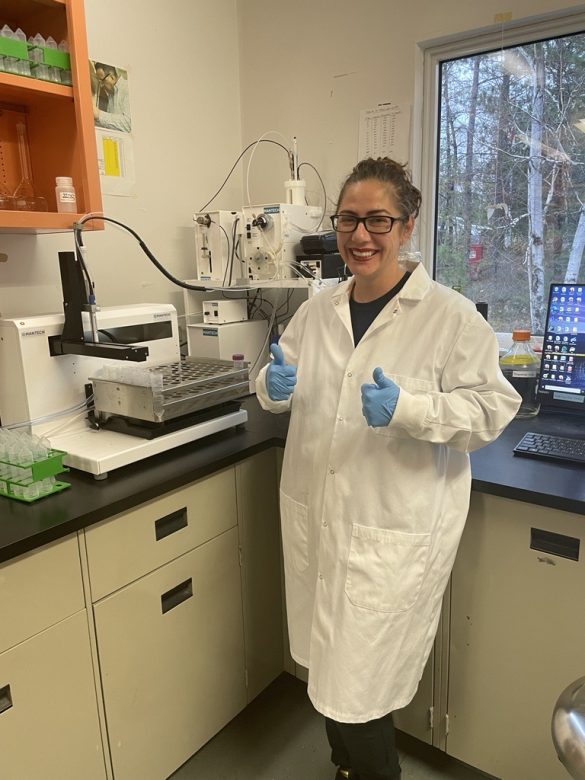
So, in the 2021 field season we did just that.
We analyzed 341 TDP samples using both the old manual spectrophotometer method and the new automated Auto Analyzer 3 method and analyzed 228 gran alkalinity samples using the new MT-100 and compared these results to those obtained from the external laboratory. The results for the TDP comparison were what we had hoped for. Not only did the results from the AA3 correlate well with the results from the spectrophotometer (slope and r2 very close to one), but the limit of detection (i.e., the lowest concentration we can accurately measure) was reduced by more than half; from 2.12 ± 0.74 µg/L on the spectrophotometer to 0.96 ± 0.86 µg/L on the AA3. Gran alkalinity results obtained from the MT-100 were well correlated with the results provided by the external laboratory, though perhaps not as tightly as the TDP correlation.
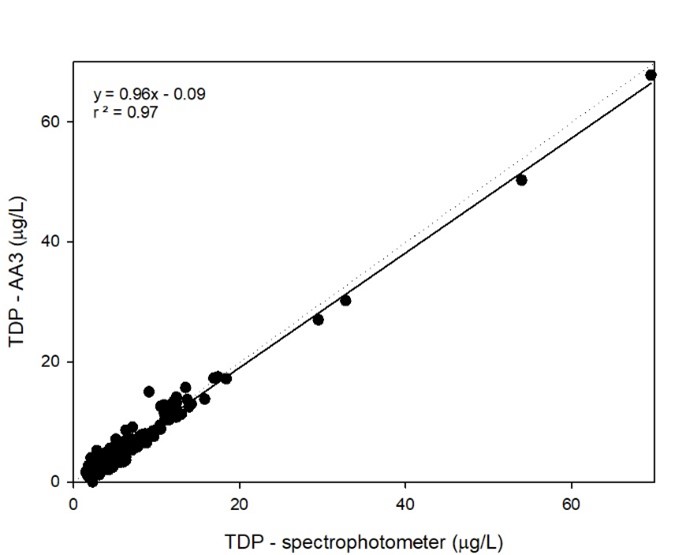
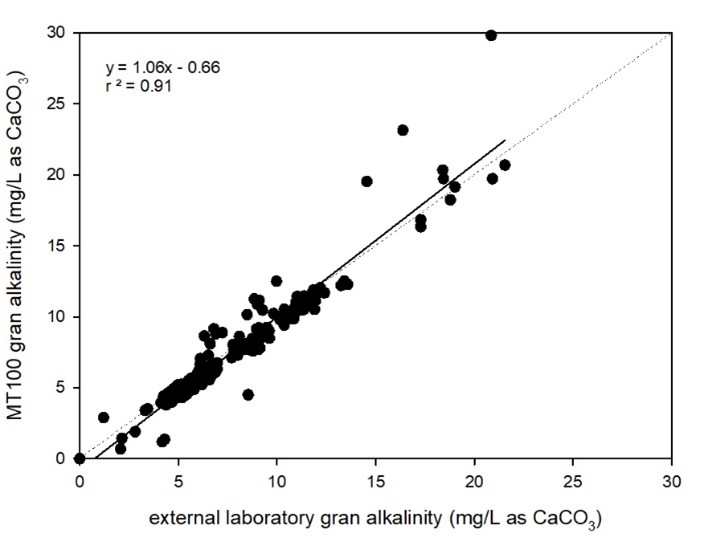
Given these results, we believe that implementing these two new analytical methods will not induce non-ecological variability in the long-term data set and can move forward with using these instruments to measure TDP and gran alkalinity.
But what happens when the results from the two instruments do not correlate or when there is a bias (i.e., one instrument consistently provides higher or lower concentrations than the other)? We unfortunately ran into this issue with pH. The pH measured with our old Accumet pH meter did not correlate well with the pH measured with our new MT-100. So, we have a problem that we need to investigate. The first question is, which results are more accurate? Fortunately, we participate in the Environment and Climate Change Canada (ECCC) proficiency testing program, wherein samples are sent to and analyzed by participating laboratories throughout Canada and the results are averaged by ECCC, which provides an estimate of the ‘accurate’ concentration. Our results can then be compared to these ‘accurate’ concentrations. We measured the pH of the ECCC proficiency testing samples using both the Accumet pH meter and the MT-100. The results were both good news and bad news. The good news was the MT-100 provided accurate pH measurements and we can move forward with using the MT-100 to measure pH. The bad news was that the Accumet pH results were biased high, meaning the 2021 pH results measured with Accumet, and added to our long-term dataset, are likely biased high. Luckily, we can use the results from the proficiency testing to ‘correct’ these pH results in our long-term dataset, which shows just how important participating in proficiency testing is.
